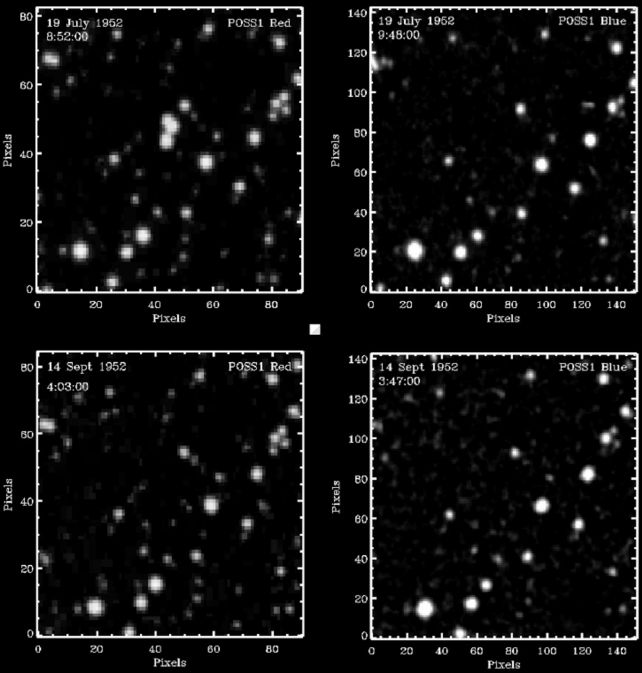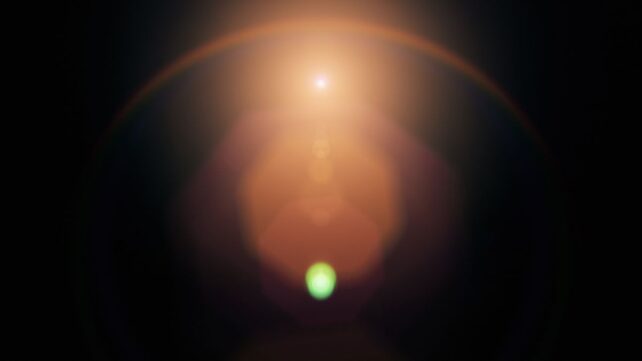Mysterious lights and reports of unidentified anomalous phenomena (UAPs) in the 1940s and 1950s appear to be somehow linked to nuclear testing, scientists have discovered.
An analysis of archival astronomical observations, combined with eyewitness accounts of UAPs (the official name for unidentified flying objects), suggests that the nuclear age left its fingerprints on the astronomical record, before the Space Age even began.
"Our findings provide additional empirical support for the validity of the UAP phenomenon and its potential connection to nuclear weapons activity, contributing data beyond eyewitness reports," write anesthesiologist Stephen Bruehl of Vanderbilt University in the US and theoretical physicist Beatriz Villarroel of Stockholm University in Sweden.
Related: Ghostly Glow of a Nuclear Power Station Was Detected in Pure Water 150 Miles Away
Between 1949 and 1958, the Mount Palomar Observatory conducted its first-ever Palomar Observatory Sky Survey (POSS-I), an ambitious project to photograph and map the entire northern sky one small sector at a time.

It wasn't until later sky surveys that scientists realized some of the lights in the POSS-I data did not appear in subsequent observations.
Points of light that appear in one observation but disappear before the next are known as transients. These POSS-I transients were often attributed to faults and defects in the glass photographic plates onto which astronomical images were recorded at the time.
For the last several years, Villarroel has led the Vanishing and Appearing Sources during a Century of Observations (VASCO) project, an effort to identify changes in the night sky across, well, a century of astronomical observations.
In a previous paper published in 2021, Villarroel and her team found that plate defects could not easily explain some of the POSS-I transients, although it's important to note that not everyone agreed with this interpretation.
Bruehl and Villerroel wanted to know if at least some of the ambiguous transients in POSS-I could be linked to anthropogenic or atmospheric phenomena, focusing on the above-ground nuclear testing that took place around the middle of the 20th century, as well as witness reports of UAPs.

They built a dataset covering 2,718 days, noting the days on which transients appeared. They then cross-referenced the transients against the dates of all known US, Soviet, and British above-ground nuclear tests, as well as witness reports of UAPs (formerly known as UFOs) recorded in the UFOCAT database.
The results are fascinating. Transients appeared in the sky 45 percent more often within a nuclear test window – that is, a day before and after a nuclear test took place. The day after a nuclear test returned the most significant link – a 68 percent higher likelihood of a transient appearing in the POSS-I data.
Next, they cross-referenced UAP sightings with transient data. There, the connection was smaller, but still interesting, especially for days with multiple UAP reports. For every additional report on a given day, the likelihood of a transient appearing rose 8.5 percent, the researchers found.
Finally, the researchers found that UAP reports rose slightly during nuclear testing windows – a connection that had never before been demonstrated in scientific literature.
These results don't explain the correlations, but they do suggest that both the transients and at least some UAP sightings are real. For one thing, if the transients were due to plate defects, they would be far less likely to cluster around specific dates as Bruehl and Villerroel have identified.
Secondly, while the correlation between transients and UAPs is small, it's still well beyond coincidence, the researchers say.
Although an explanation for the transients is pending further investigation, the researchers were able to rule out a few. Because these lights were observed more frequently the day after a nuclear test, they are unlikely to have been fallout lingering in the atmosphere.
Nor is an observation bias likely to be at play, since scientists were not aware of the existence of transients at the time, and the dates of nuclear tests were not known to the people reporting UAPs.
"Regardless of what transients are ultimately determined to be, our results add to growing evidence supporting the interpretation of transients as real observations rather than as emulsion defects," the researchers write.
"The ultimate importance of the associations reported in the current work for enhancing understanding of transients and UAP remains to be determined."
We look forward to further findings.
The research has been published in Scientific Reports.

